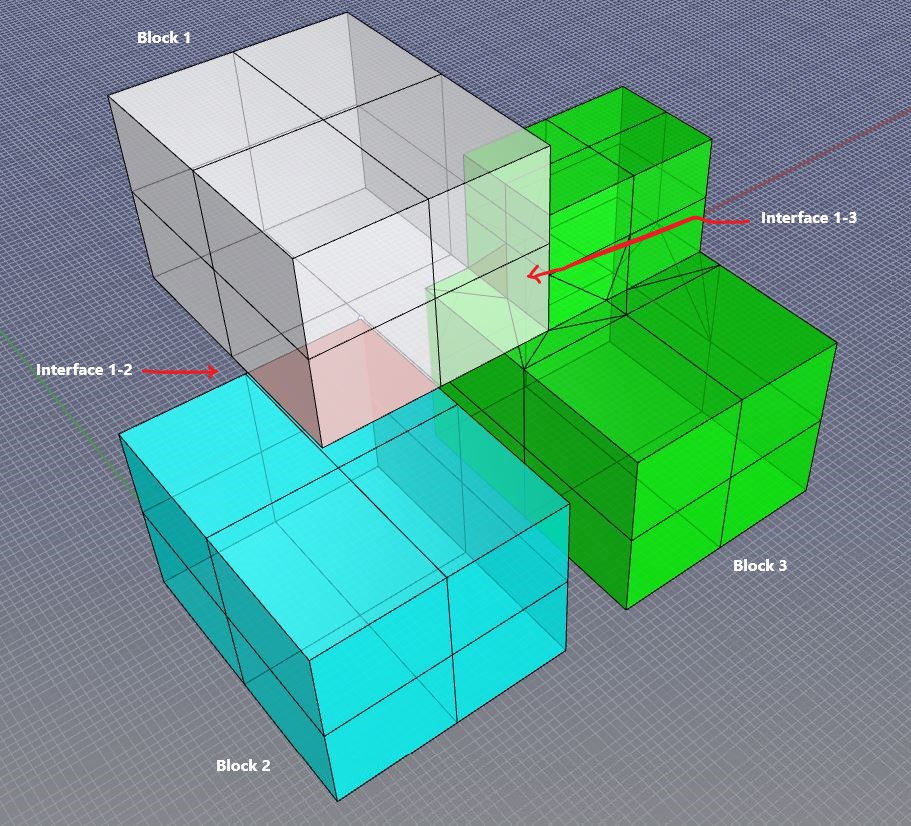-
Notifications
You must be signed in to change notification settings - Fork 16
New issue
Have a question about this project? Sign up for a free GitHub account to open an issue and contact its maintainers and the community.
By clicking “Sign up for GitHub”, you agree to our terms of service and privacy statement. We’ll occasionally send you account related emails.
Already on GitHub? Sign in to your account
assembly_interfaces_xfunc returns only one face per block pair #3
Comments
|
i will have a closer look tomorrow, but, if i remember correctly, the algorithm indeed only allows for one interface between two blocks (there can be only one edge between two vertices of the assembly network). this, in part, has to do with how RBE works and therefore should not be a constraint for the general assembly data structure. however, it is also not trivial to encode this properly with the network data structure because there can be at most two edges between any two vertices (if they are in opposite directions). to have more edges than two between any two vertices we need a multigraph implementation... |
|
ha and furthermore... i only just noticed that block 3 is non-convex. that is in any case something you have to handle differently.
|
|
I think as a generic data structure to represent assembly contact points. The (bidirectional) edges structure can stay the same even for multiple interfaces. The computation of the intersection creates an edge to represent the interface, and a list of contact faces are stored within that edge. On a separate note, If the algorithm is intended to only work for convex objects. Then maybe it is not right for what I do. I have very often 3 or more contact faces per block pair. For what I do, I only need the normal from those faces. I don't actually need the curve intersections between the faces. I devised an algorithm to do something similar, it is based on RhinoCommons. I haven't thoroughly tested it yet. Maybe if there is enough interest, I can try plot it to COMPAS only implmentation: """
This function computes all the interfaces between two mesh objects.
Interfaces are defined as co-planar mesh faces that overlaps with each other.
(Edges touching is also considered as overlaps in this function)
The meshes can be non-convex.
Inputs:
mesh_a: One of the mesh to be detected
mesh_b: Another one of the mesh to be detected
Output:
face_id_a: List of the indices of interface faces on mesh a
face_id_b: List of the indices of interface faces on mesh b
block_vector_a: List of the blocking vector (face normal)
corrisponding to the interface faces on mesh a
block_vector_b: List of the blocking vector (face normal)
corrisponding to the interface faces on mesh b
(block_vector_a and block_vector_b have the same number
of vectors that points to opposite directions)
This function is expected to run within Rhino v6 Grasshopper GHPython Object
"""
__author__ = "yck011522"
__version__ = "2019.07.17"
threshold = tolerance
import Rhino
import rhinoscriptsyntax as rs
# Extract Face normals
mesh_a.FaceNormals.ComputeFaceNormals()
mesh_a.FaceNormals.UnitizeFaceNormals()
mesh_b.FaceNormals.ComputeFaceNormals()
mesh_b.FaceNormals.UnitizeFaceNormals()
output_face_id_a, output_face_id_b = [],[]
output_block_vector_a, output_block_vector_b = [],[]
#Helper function to check if this block vector is already inserted
def add_vector_to_list(vectorlist, vector_to_add):
for vector in vectorlist:
if (vector * vector_to_add > tolerance/100):
return
vectorlist.append(vector_to_add)
for a in range (mesh_a.Faces.Count): # Loop all faces in mesh a
for b in range (mesh_b.Faces.Count): # Loop all faces in mesh b
#Check normal to be opposite
normal_a = mesh_a.FaceNormals[a]
normal_b = mesh_b.FaceNormals[b]
if((normal_a + normal_b).Length > threshold):
continue
#Check if the faces are coplanar
center_a = (mesh_a.Faces.GetFaceCenter(a))
center_b = (mesh_b.Faces.GetFaceCenter(b))
vector_a_to_b = Rhino.Geometry.Point3d.Subtract(center_b, center_a)
coplanar_distance = Rhino.Geometry.Vector3d(normal_a) * vector_a_to_b # Dot Product
if (abs(coplanar_distance) > threshold):
continue
#Get the vertices coordinate of the face corners
pt_a =[0]*4
pt_b =[0]*4
success, pt_a[0], pt_a[1], pt_a[2], pt_a[3] = mesh_a.Faces.GetFaceVertices(a)
success, pt_b[0], pt_b[1], pt_b[2], pt_b[3] = mesh_b.Faces.GetFaceVertices(b)
#Cast data type from point3f to point3d
for i in range(4):
pt_a[i] = Rhino.Geometry.Point3d(pt_a[i])
pt_b[i] = Rhino.Geometry.Point3d(pt_b[i])
#Draw polyline to represent the mesh face
curve_a = Rhino.Geometry.Polyline(pt_a).ToPolylineCurve()
curve_b = Rhino.Geometry.Polyline(pt_b).ToPolylineCurve()
#Check actual intersection between two mesh faces
_ , testPlane = Rhino.Geometry.Plane.FitPlaneToPoints(pt_a)
region_containment_result = Rhino.Geometry.Curve.PlanarClosedCurveRelationship(curve_a,curve_b,testPlane,threshold)
if (region_containment_result == Rhino.Geometry.RegionContainment.Disjoint):
continue
#print(region_containment_result)
#print (str(a) + "-" + str(b))
#If the two mesh faces matches all the tests, all its property to output list
output_face_id_a.append(a)
output_face_id_b.append(b)
add_vector_to_list(output_block_vector_a,normal_a)
add_vector_to_list(output_block_vector_b,normal_b)
#Routing Output Data
face_id_a = output_face_id_a
face_id_b = output_face_id_b
block_vector_a = output_block_vector_a
block_vector_b = output_block_vector_b |
Describe the bug

I have a test data of three blocks. See attached image.
I used the following code to compute the interface:
I expected Interface 1-3 (marked in red) to return all the intersecting faces between the two blocks.
Or is this function designed to only return one face pair?
I digged ito the code of
compas_assembly/datastructures/interfaces_numpy.pyBut I couldn't understand the code logic, so maybe I'll ask here.
I also looked into paper
Data management and modelling of complex interfaces in imperfect discrete-element assembliesbut there wasn't any mention of the code behaviourTo Reproduce
Steps to reproduce the behavior:
InterfaceRhinoPython.zip
Expected behavior
I expect all of the intersecting faces to be return.
The text was updated successfully, but these errors were encountered: